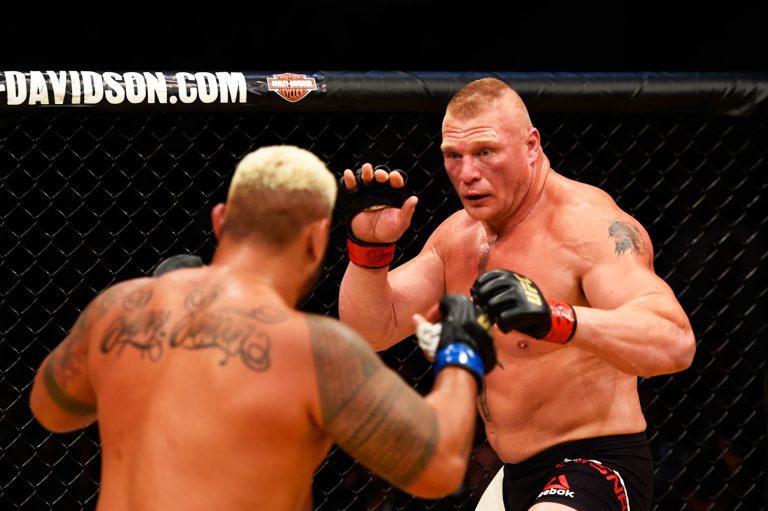When you watch UFC fighters perform, their incredible strength, speed, and ability to recover from tough fights can be truly amazing. These powerful physiques and athletic feats sometimes lead people to wonder: “Are they using steroids or other performance-enhancing drugs (PEDs)?” It’s a fair question, especially given the high stakes in professional sports.
Let’s get straight to the point: No, UFC fighters are strictly forbidden from taking steroids or any other banned performance-enhancing drugs. The UFC has one of the most rigorous anti-doping programs in all of professional sports, designed to keep the competition fair and the athletes safe.
What Exactly Are Steroids (and Other PEDs) in MMA?
Before we dive into the rules, let’s understand what we’re talking about:
Anabolic Steroids:
These are synthetic (man-made) hormones that are similar to testosterone, a natural hormone in the body. When used, they can help build muscle mass, increase strength, and significantly speed up recovery after intense training or injuries. This sounds great for a fighter, right? That’s why they are tempting, but also strictly banned.
Other Common PEDs:
Besides anabolic steroids, there are other types of banned substances:
Growth Hormone (HGH): This hormone helps with cell growth and regeneration, which can aid in muscle development and recovery.
EPO (Erythropoietin): This drug increases the production of red blood cells, which carry oxygen to muscles. More oxygen means better endurance, allowing a fighter to last longer and perform better in tough fights.
Diuretics: These substances make your body get rid of water very quickly. While sometimes used for rapid weight cutting, they can also be used to “mask” or hide other banned substances in a urine test by flushing them out of the system faster.
Stimulants: Some stimulants are banned because they can boost energy, focus, and reaction time. (Note: Some common substances like caffeine are allowed up to certain levels, but stronger stimulants are not).
Why Fighters Might Be Tempted:
The pressure to win in the UFC is immense. A fighter’s career, income, and legacy depend on their performance. This creates a strong temptation to use PEDs for:
Competitive Advantage: Being stronger, faster, or having more endurance than your opponent.
Faster Recovery: Getting back to training or fighting quicker after injuries or tough camps.
Pressure to Perform: The constant demand to deliver exciting fights and maintain a winning record.
The UFC’s Stance: Zero Tolerance for Cheating
The UFC has a very clear and strict policy: zero tolerance for performance-enhancing drugs. They are committed to a “clean sport” where fighters compete based on their natural abilities and hard work, not on chemical enhancements.
To enforce this, the UFC previously partnered with the United States Anti-Doping Agency (USADA) for many years. As of early 2024, the UFC transitioned to a new, in-house anti-doping program managed by Combat Sports Anti-Doping (CSAD), which is a division of Drug Free Sport International (DFSI). The goal remains the same: to have an independent and robust testing program. This new partnership aims to continue the strict, fair, and effective testing that ensures a level playing field.
How Fighters Are Tested for Steroids and PEDs
The anti-doping program is designed to catch cheaters, no matter how clever they try to be. Here’s how fighters are tested:
Random, Out-of-Competition Testing: This is the most powerful tool. Fighters can be tested anytime, anywhere, without any prior notice. Testers can show up at their home, gym, or even on vacation. This is crucial because many PEDs clear the body relatively quickly, so testing outside of fight week is essential to catch them.
In-Competition Testing: Fighters are also tested around their fight dates, usually before or immediately after their bouts.
Types of Samples: Testers collect:
-
- Urine Samples: These are the most common and can detect a wide range of banned substances.
- Blood Samples: These are used for more sophisticated detection, especially for substances like HGH or EPO.
The “Whereabouts” Program: Fighters are required to regularly update their location information with CSAD (or the relevant anti-doping body). This allows testers to find them for random tests. Missing too many tests without a valid reason can be treated as a failed test.
What Happens if a Fighter Fails a Drug Test?
The consequences for failing a drug test in the UFC are severe and can be career-altering:
Suspension: Fighters face lengthy suspensions, often ranging from six months to several years, depending on the substance, the amount found, and whether it’s a first or repeat offense.
Fines and Forfeitures: They can lose a significant percentage of their fight purse (the money they earned for the fight). Sometimes, the fight result itself can be overturned and changed to a “No Contest” (meaning it’s as if the fight never happened in terms of official record).
Public Shame and Reputation Damage: Being caught using PEDs leads to a huge loss of trust from fans, fellow fighters, and the organization. Being labeled a “cheater” can severely damage a fighter’s reputation and legacy, making it hard to regain respect even after a suspension.
The Evolution of Anti-Doping in MMA
MMA, like many sports, has come a long way. In its early days (the 1990s and early 2000s), anti-doping regulations were much less strict, and PED use was likely more widespread. However, as the sport grew and sought to be recognized as a legitimate athletic competition, there was a strong push for a cleaner environment.
The UFC has been at the forefront of this shift, investing heavily in robust testing programs. This commitment has helped legitimize MMA in the eyes of the public and athletic commissions worldwide. The fight against PEDs is ongoing, as new substances emerge, but testing methods are also constantly improving to keep up.
Health Risks and Ethical Considerations of Steroid Use
Beyond the rules and penalties, there are serious health and ethical reasons why PEDs are banned:
Health Risks for Fighters:
Using steroids and other PEDs can have severe short-term and long-term health consequences, including:
-
- Short-term: Acne, hair loss, mood swings (often called “roid rage”), and liver damage.
- Long-term: Serious heart problems (like enlarged heart or heart attacks), kidney damage, hormonal imbalances, and even infertility.
Ethical Debate and Fair Play:
-
- Using PEDs is fundamentally unfair to clean athletes who train hard and compete honestly.
- It compromises the integrity of the sport, making fans question the authenticity of performances.
- The core idea of a “level playing field” is destroyed when some athletes gain an artificial advantage.
Conclusion
So, can UFC fighters take steroids? The answer is a resounding no. The UFC maintains a strict anti-doping policy, enforced by independent testing, to ensure fair competition and protect the health of its athletes. While the temptation to cheat might exist, the severe consequences, combined with the UFC’s commitment to a clean sport, mean that fighters must rely on their natural talent, hard work, and discipline to succeed in the Octagon. This ongoing commitment is vital for the safety of the fighters and the integrity of mixed martial arts.
Read more:


